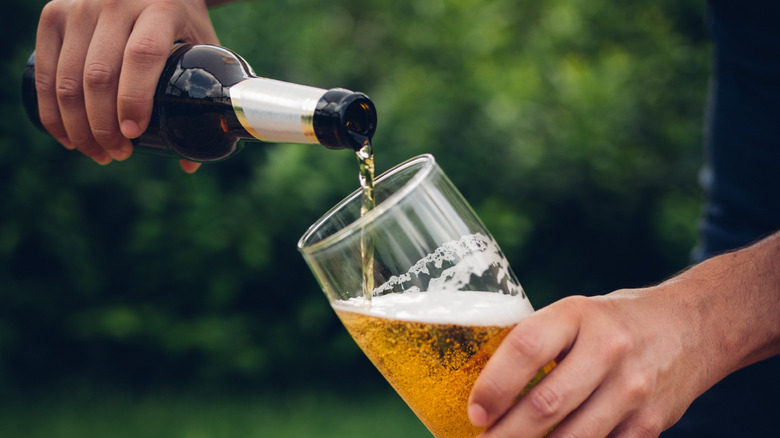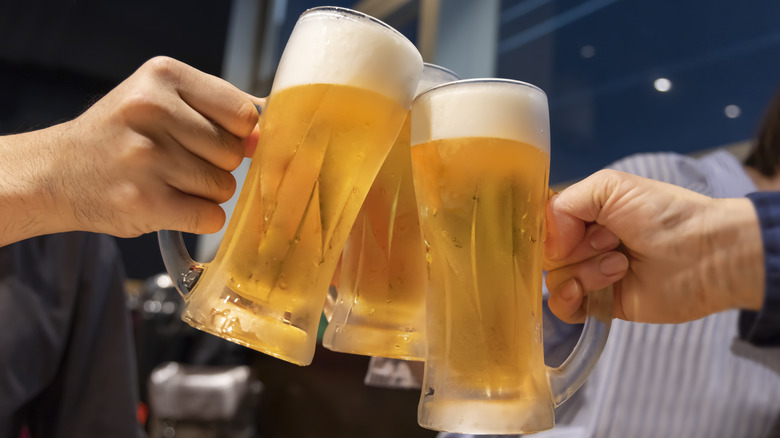The Scientific Reason Beer Gets Foamy At The Top
There's nothing like a freshly poured pint of cold beer, complete with a smooth ½-inch-thick foam spread across the top of your glass. If you're a fan of beer (or science), you might wonder what causes that frothiness. It doesn't seem to happen with all alcoholic beverages. After all, the bubbles in champagne don't provide that thick layer of foam on top.
Beer foam is caused by the carbon dioxide in the drink, which is produced during the brewing process. Yeast, which is used to brew beer, produces carbon dioxide as a byproduct while the beer ferments.
The gas continues to build up throughout the fermentation stage and gets pressurized when the beer is bottled or canned. The result is that when you pop the tab on a cold one, the gas tries to escape the confined space. So, all that gas rises to the surface, creating a thick foam on your beer.
How to get just the right amount of foam on your beer
It's no fun drinking a beer that's more foam than brew. Likewise, no one wants a beer that's missing its signature froth. So, how do you get just the right amount of foam on your beer?
Part of it comes down to the way you pour beer. Pouring at a 45-degree angle and straightening it once the glass is about halfway full will provide you with a nice layer of foam without it being too much.
Another key to getting the right amount of foam is to pay attention to your glass. Rinsing it out before starting your pour can help you avoid chemicals, food residue, or soap on the glass, which can lead to too much or too little foam. The glass shape can also affect your beer's head, as different glass shapes make it easier for the chemicals that create foam to get trapped in the cup.
The last key to getting a great beer head is ensuring your brew is cold before your pour. Warm beer can cause extra foam; when you pour it, you can wind up having more bubbles than beer in your cup.
How does beer foam affect your brew's flavor?
Aside from carbon dioxide, beer foam contains yeast, hops, and protein, which means that the foam should have a notable smell and flavor to it. When you take a sip of your drink, you get a whiff of these cohesive components.
Since it's the foam that brings out most of the aromatic notes to your beer, a majority of what we taste actually comes from what we smell. The result is that the more aromatic your beer smells, the more flavors in your beer you'll be able to pick up on.
On top of that, beer foam affects your trigeminal sensations, which a study from Science Direct shows affects the flavor of the beer. Trigeminal sensations are what give you sensations of temperature, creaminess, and texture. Beer foam can give you sensations such as thick, creamy, or watery, ultimately affecting the overall taste of your brew.


